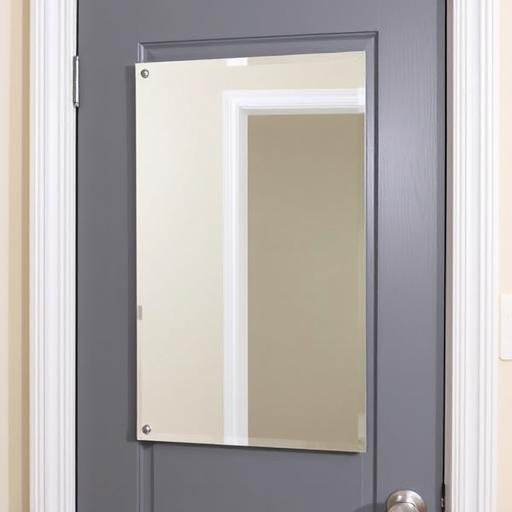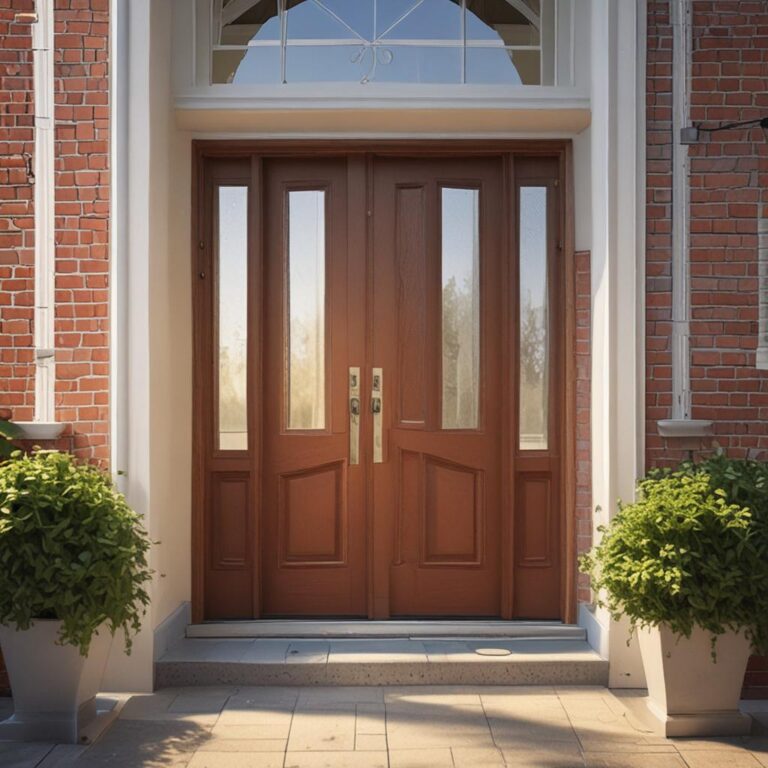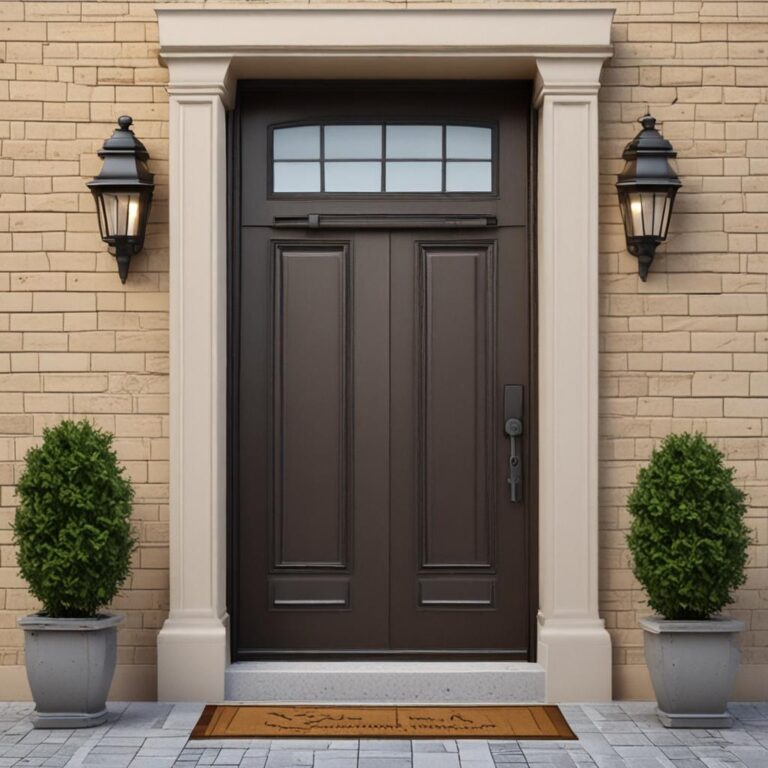How to Hang a Mirror on a Door Without Screws
Adding a mirror to a door can be a fantastic way to maximize space, enhance light, and add a stylish touch to any room. However, the thought of drilling into a door – especially if you’re renting or simply prefer a non-permanent solution – can be daunting. Fortunately, there are several effective methods for hanging a mirror on a door without using screws. This guide will walk you through practical, easy-to-follow techniques to achieve a secure and aesthetically pleasing result.
Why Avoid Screws When Hanging a Mirror on a Door?
Using screws to hang a mirror on a door can present several drawbacks. You risk damaging the door itself, potentially requiring costly repairs. For renters, drilling holes can violate lease agreements and lead to penalties. Even as a homeowner, screws can void warranties on hollow-core doors. Screw-free methods offer a wealth of benefits, including easy installation, the flexibility to reposition or remove the mirror without damage, and minimal impact on your door’s integrity. They’re ideal for renters, those who like to redecorate frequently, or anyone who wants a hassle-free solution.
Materials and Tools You’ll Need
Before you begin, gather the necessary materials. Here’s a list of essentials:
- Adhesive hooks or strips (e.g., Command™ strips)
- Over-the-door mirror hangers
- Tension rods or adjustable brackets
- Suction cups (if applicable)
- Measuring tape
- Level
Choosing the right materials depends on the mirror’s size and weight, as well as your door type. For lightweight mirrors, adhesive strips or suction cups may suffice. Heavier mirrors will require more robust solutions like over-the-door hangers or tension rods. Consider the door’s material – smooth surfaces work best with suction cups, while adhesive strips are generally suitable for most painted doors.

Step-by-Step Methods to Hang a Mirror Without Screws
Using Adhesive Hooks or Strips
Adhesive hooks and strips are a popular choice for lightweight to medium-weight mirrors. First, select strips rated for the mirror’s weight – always err on the side of caution and choose a higher weight capacity. Thoroughly clean the door surface with rubbing alcohol to remove any dust or grime. Apply the adhesive strips according to the manufacturer’s instructions, ensuring they are firmly pressed onto both the door and the mirror. Allow the adhesive to set for the recommended time before hanging the mirror. For added security, use multiple strips.

Over-the-Door Mirror Hangers
Over-the-door mirror hangers are designed to hook over the top of a door, providing a convenient and secure hanging solution. These hangers typically have adjustable hooks to accommodate different door thicknesses. Simply position the hanger over the door, ensuring it’s stable and level. Then, hang the mirror onto the hanger’s frame. Be mindful of the door’s thickness and the mirror’s size, as some hangers have limitations.
Using Tension Rods or Adjustable Brackets
Tension rods or adjustable brackets can be used to create a frame for the mirror, holding it in place without screws. Measure the width of the door and adjust the rod or brackets accordingly. Position the rod or brackets against the door and tighten them to create a secure fit. Ensure the mirror is centered and stable within the frame. This method works best for mirrors that are slightly smaller than the door width.
Suction Cups (for Glass or Smooth Surfaces)
Suction cups are ideal for lightweight mirrors on smooth, non-porous surfaces like glass or metal doors. Clean both the suction cups and the door surface thoroughly. Press the suction cups firmly against the door, ensuring a strong seal. Test the grip before fully trusting the suction cups to hold the mirror’s weight. Remember that suction cups are not suitable for heavy mirrors or textured surfaces.
Tips for Ensuring Stability and Safety
Always check the weight limits of all materials before use. Regularly inspect the mirror’s stability, especially after initial installation. Gently test the setup by applying slight pressure to the mirror to ensure it’s securely in place before leaving it unattended. If you notice any signs of loosening or instability, immediately reinforce the hanging method or remove the mirror.

Creative Ideas for Decorating Around a Door Mirror
A door mirror isn’t just functional; it’s a decorative element too! Enhance the area around the mirror with strategically placed plants, creating a fresh and inviting atmosphere. Add small accent lights to highlight the mirror and brighten the space. Consider incorporating wall art or decorative hooks to complement the mirror’s style. A door mirror can visually expand a room and add a touch of elegance to your decor.
Conclusion
Hanging a mirror on a door without screws is achievable with the right methods and materials. Whether you choose adhesive strips, over-the-door hangers, tension rods, or suction cups, remember to prioritize safety and stability. Select the method that best suits your mirror’s weight, your door type, and your personal preferences. We encourage you to share your own tips and experiences in the comments below!

FAQ Section
Can I hang a heavy mirror on a door without screws?
Hanging a heavy mirror without screws requires careful consideration. While challenging, it’s possible using heavy-duty adhesive strips (rated for significant weight) or tension rods designed for heavier loads. Over-the-door hangers with robust construction are also an option. Always prioritize safety and ensure the chosen method can reliably support the mirror’s weight.

Will adhesive strips damage the door?
High-quality adhesive strips, like Command™ strips, are designed to be removed without causing damage. However, it’s always a good idea to test the strip on a small, inconspicuous area of the door first. Follow the manufacturer’s removal instructions carefully, and use a plastic scraper if needed to avoid damaging the paint.
How do I keep the mirror from swinging or moving?
To prevent swinging or movement, use two hangers or sets of adhesive strips instead of one. Adding small rubber bumpers to the back of the mirror can also help stabilize it and prevent it from shifting. Ensure the door is closed gently to avoid excessive movement.
Can I use these methods for any type of door?
These methods are generally compatible with most door materials, including wood, glass, and metal. However, adjustments may be needed for varying door thicknesses. Suction cups work best on smooth, non-porous surfaces, while adhesive strips are suitable for most painted doors. Always check the product instructions for specific compatibility information.
Are suction cups a reliable option for hanging mirrors?
Suction cups are a reliable option for lightweight mirrors on smooth, clean surfaces. However, they may not be suitable for heavy mirrors or textured surfaces. Ensure the suction cups are properly applied and create a strong seal. Regularly check the grip to prevent the mirror from falling.







